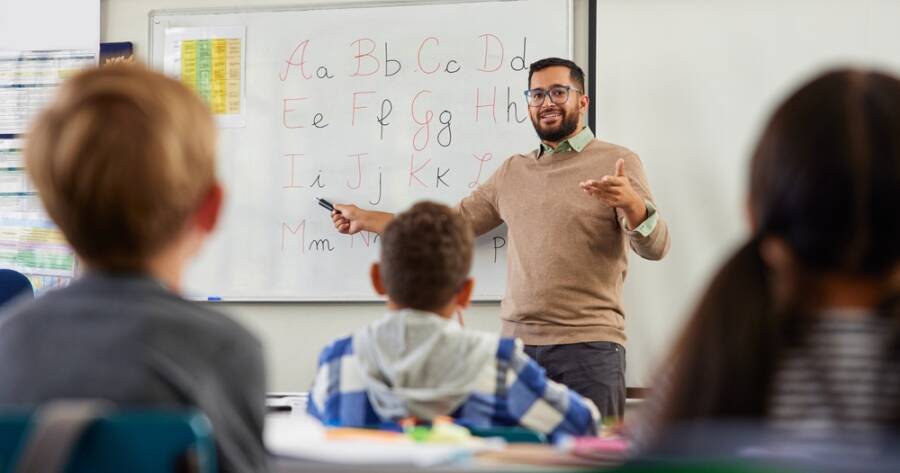Every teacher hopes their lessons linger long after the bell rings. Yet, memory is selective. Some lessons fade quickly while others stay with students for years. What separates forgettable instruction from lasting impact often comes down to psychology. Understanding how the brain processes, organizes, and recalls information allows educators to design lessons that resonate. Memorable teaching isn’t about more content; it’s about smarter delivery that sparks curiosity, connection, and long-term understanding.
Chunking: Helping Students Connect the Dots
The human brain can only hold a few pieces of information at once—about three to four, according to memory researchers. To make learning more effective, teachers can use chunking: grouping related ideas under one central theme. Instead of listing disconnected facts, organize them around a single concept that ties everything together.
For example, when teaching the water cycle, use one overarching question—“How does water travel through our planet?”—and then connect each stage as part of that story. This structure helps students see how ideas relate, reducing cognitive overload while strengthening comprehension. Chunking transforms scattered details into a meaningful, memorable framework that sticks in students’ minds.
Making Abstract Concepts Concrete
Students remember what they can visualize and feel. Abstract ideas like justice, democracy, or metabolism become more memorable when grounded in vivid examples or sensory experiences. When you bring lessons to life through stories, visuals, or relatable analogies, you activate more parts of the brain—making learning both engaging and easier to recall.
For instance, when explaining gravity, tell a story about dropping an apple or jumping off a swing as a child. Those images create emotional anchors that help students recall scientific principles later. Concrete details make information not only easier to understand but also more enjoyable to remember. The more tangible the concept, the deeper the learning.
Using Callbacks to Reinforce Retention
Revisiting past material strengthens memory by forcing the brain to retrieve and reconnect information. Each time students recall a concept, it becomes easier for them to remember it again later. This is why frequent review, quizzes, and discussions are powerful tools for long-term retention.
Callbacks don’t have to be formal tests—they can be as simple as asking, “Who remembers what we discovered last week?” or connecting new topics to old ones. For example, linking a new math formula to one learned previously helps build a mental network of knowledge. Regular retrieval turns learning into a continuous process rather than a one-time event.
Sparking Curiosity Through Questions
Curiosity is one of the most powerful motivators for memory. When students feel intrigued or challenged by a question, their brains release dopamine—a chemical that enhances focus and helps store new information. Instead of starting lessons with facts, begin with a thought-provoking question that highlights a gap in understanding.
For example, ask, “Why do some memories last a lifetime while others disappear?” before a psychology lesson on memory formation. The question activates curiosity and prepares the brain to absorb new material. When students actively seek answers, they’re more engaged and more likely to remember the learning experience long after class ends.
Engaging Emotion to Strengthen Memory
Emotions play a powerful role in what we remember. Joy, surprise, empathy, and even mild frustration can all make lessons more memorable. Incorporating storytelling, role-play, or real-world applications invites students to connect emotionally to the material. When learning feels personal, it becomes part of their lived experience rather than just information to memorize.
Think about lessons that moved you as a student—they likely involved emotion. A teacher who made you laugh, think deeply, or feel inspired left an imprint because emotion cements memory. By weaving feeling into facts, educators can transform lessons into experiences students carry far beyond the classroom.
Encouraging Students to Teach and Reflect
One of the most effective ways to remember something is to explain it to someone else. Encouraging peer teaching, group discussion, or quick reflection exercises helps students organize knowledge in their own words. This process deepens understanding and identifies gaps that passive listening can’t reveal.
At the end of a lesson, ask students to summarize key ideas or connect new knowledge to something they already know. When they actively engage with content—by teaching, journaling, or discussing—they shift from memorizing to mastering. Reflection turns learning into ownership, ensuring that what they’ve learned truly sticks.
Turning Lessons Into Lasting Impressions
Memorable teaching isn’t about dazzling presentations or endless repetition—it’s about connection, curiosity, and clarity. When lessons are chunked into meaningful parts, grounded in vivid examples, and revisited through reflection, they move from short-term recall to long-term understanding.
Great teachers don’t just fill minds, they spark memories that guide students for years to come. The lessons that stay are the ones that make students think, feel, and wonder long after they’ve left the classroom.

